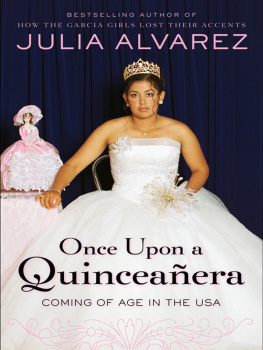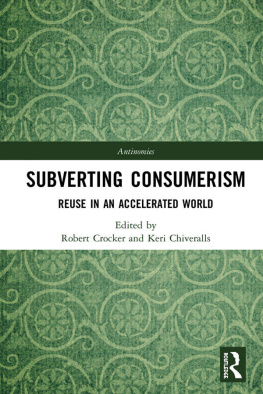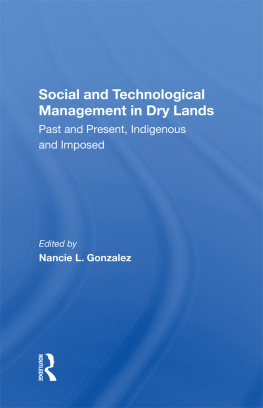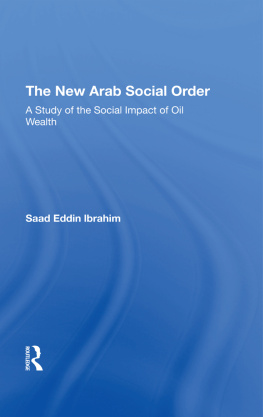Rachel González - Quinceañera Style: Social Belonging and Latinx Consumer Identities
Here you can read online Rachel González - Quinceañera Style: Social Belonging and Latinx Consumer Identities full text of the book (entire story) in english for free. Download pdf and epub, get meaning, cover and reviews about this ebook. year: 2019, publisher: University of Texas Press, genre: Politics. Description of the work, (preface) as well as reviews are available. Best literature library LitArk.com created for fans of good reading and offers a wide selection of genres:
Romance novel
Science fiction
Adventure
Detective
Science
History
Home and family
Prose
Art
Politics
Computer
Non-fiction
Religion
Business
Children
Humor
Choose a favorite category and find really read worthwhile books. Enjoy immersion in the world of imagination, feel the emotions of the characters or learn something new for yourself, make an fascinating discovery.

- Book:Quinceañera Style: Social Belonging and Latinx Consumer Identities
- Author:
- Publisher:University of Texas Press
- Genre:
- Year:2019
- Rating:4 / 5
- Favourites:Add to favourites
- Your mark:
- 80
- 1
- 2
- 3
- 4
- 5
Quinceañera Style: Social Belonging and Latinx Consumer Identities: summary, description and annotation
We offer to read an annotation, description, summary or preface (depends on what the author of the book "Quinceañera Style: Social Belonging and Latinx Consumer Identities" wrote himself). If you haven't found the necessary information about the book — write in the comments, we will try to find it.
A dynamic study of social negotiation and consumerism in the coming-of-age quinceaera celebration and the impact of normalizing spectacles of luxury.
Rachel González: author's other books
Who wrote Quinceañera Style: Social Belonging and Latinx Consumer Identities? Find out the surname, the name of the author of the book and a list of all author's works by series.
Quinceañera Style: Social Belonging and Latinx Consumer Identities — read online for free the complete book (whole text) full work
Below is the text of the book, divided by pages. System saving the place of the last page read, allows you to conveniently read the book "Quinceañera Style: Social Belonging and Latinx Consumer Identities" online for free, without having to search again every time where you left off. Put a bookmark, and you can go to the page where you finished reading at any time.
Font size:
Interval:
Bookmark:
QUINCEAERA STYLE
Social Belonging and Latinx Consumer Identities
RACHEL VALENTINA GONZLEZ

UNIVERSITY OF TEXAS PRESS
Austin
Copyright 2019 by the University of Texas Press
All rights reserved
First edition, 2019
Requests for permission to reproduce material from this work should be sent to:
Permissions
University of Texas Press
P.O. Box 7819
Austin, TX 787137819
utpress.utexas.edu/rp-form
LIBRARY OF CONGRESS CATALOGING-IN-PUBLICATION DATA
Names: Gonzlez, Rachel Valentina, author.
Title: Quinceaera style : social belonging and Latinx consumer identities / Rachel Valentina Gonzlez.
Description: First edition. | Austin : University of Texas Press, 2019. | Includes bibliographical references and index.
Identifiers: LCCN 2019008100
ISBN 978-1-4773-1968-0 (cloth : alk. paper)
ISBN 978-1-4773-1969-7 (pbk. : alk. paper)
ISBN 978-1-4773-1970-3 (library ebook)
ISBN 978-1-4773-1971-0 (nonlibrary ebook)
Subjects: LCSH: Quinceaera (Social custom)United States. | Hispanic AmericansSocial life and customs21st century. | Hispanic AmericansEthnic identity. | Hispanic American consumersUnited States.
Classification: LCC GT2490 .G66 2019 | DDC 394.2dc23
LC record available at https://lccn.loc.gov/2019008100
doi:10.7560/319680
FOR TONY AND HIS INFINITE POTENTIAL
AND IN MEMORY OF MARIA GONZLEZ SANCHEZ, WHO LEFT HER HOME IN BAJA CALIFORNIA AT AGE FOURTEEN TO START HER LIFE IN THE UNITED STATES
CONTENTS
PREFACE
I never had a quinceaera of my own. But I distinctly remember that Emilia was late, very late. The invited guests and close family had all caravanned together from St. Elizabeths Catholic Church in East Oakland to the lavish Cameron-Stanford house on the edge of Lake Merit. The historic Victorian house and grounds was a common site for the celebration of weddings and other large private gatherings. To everyones surprise, Emilias white limousine hadnt directly followed her family and friends to the reception site as anticipated.
It was 1990. I was eight years old and wearing my repurposed first-communion dress to serve as damita, little maid, in my godsister Emilias quinceaera celebration. My role was to represent the childhood the quinceaera girl was leaving behind. Emilia was actually turning sixteen, and the celebration was a cultural compromise, as most quinceaeras are. This one blended her own desire for a sweet-sixteen celebration legible to her non-Latinx peers and her mothers wish to reinforce her Puerto Rican heritage. Emilia herself was Puerto Rican Jewish and South Asian, her mother Puerto Rican Jewish and a transplanted New Yorker. The quinceaera celebration was a cultural practice that the two could share, even if Emilias mother had not celebrated her own. The event was a symbol of intersecting subjectivities made manifest in material goodsdress, limousine, historic venue, and food.
Emilias mother paced along the edge of the veranda area filled with folding chairs and tables that had been rented for the late-afternoon event serving a predominantly Latinx audience of family and friends from other parts of the city, parts of the city with less architectural beauty and historical significance. The interior of the house remained off limits to our party except for the bathroom and kitchen area, as it was only the veranda and patio that were formally rented for our use. Even standing in the grass, watching my godsisters mother smoke frantically by a back gate and looking down the main street for the limousine to enter her line of sight, I felt exposed. I was unsettled because I was accustomed to my invisibility. The wide-set, wrought-iron fencing made the entire event and everyone celebrating visible. When I was a child, it wholly escaped me that for once we were on the inside of the fence, not peering in at elite experiences that were just out of reach. On weekends my family would drive into the Oakland hills to admire the mansions that overlooked the bay from our repurposed commercial minivan. My grandmother would call it Shangri-la.
This is the true sign of successful initiation into the US mainstream, the privilege of being rendered unremarkable.
Seeing Emilias criticism through action requires that observers question the practice of quinceaeras among US Latinas beyond the traditions capacity to serve as a symbol of ideal feminine social performance and religious conservatism. Instead, we need to imagine it as a product of consumption that defies totalizing logics of the primacy of ethnic categorization within contemporary Latinx-identifying populations. Or, to pose this assertion as a question, What kind of social citizens are Latinas allowed to be?
ACKNOWLEDGMENTS
In truth, this book would have remained an idea in my head if not for the generosity of all the individuals whose experiences are shared in these pages. My special thanks go out to Jazmin Alcazar, Christina Garza, and Doa Lupe, who were the first family to share their quinceaera story with me, in the summer of 2009. To my collaborators, friends, and each of the quinceaera girls and their mams who intimated their dreams to me, I thank you.
This book has had many iterations, but none of them would have been possible without the generous institutional support of the Department of Mexican American and Latina/o Studies and the College of Liberal Arts at the University of Texas, as well as the Woodrow Wilson Foundations Early Career Fellowship. To my colleagues who read early drafts, Regina Marchi, Nicole Guidotti-Hernndez, Juan Colomina Almiana, Laura Gutirrez, Mary Beltran, Kerry Webb, Dustin Tahamahkera, and Julie Minich, I appreciate your sharing your time, energy, and ideas with me. I thank my mentor and friend Domino Renee Perez, who generously read every word of this before anyone else. This book is a direct reflection of her commitment to thoughtful collaboration and compassionate scholarly practice.
This book would never have been finished had I not had the daily support of Doug and Tony Martin. I thank my parents, Jess G. Gonzlez and Jane Lpez, and my extended family for motivating me to keep working even when it meant we wouldnt be together. I am especially indebted to my ta and madrina Thelma Lawler, who always said I could do it, even when I didnt think I could. I am forever grateful.
INTRODUCTION
COMING OUT LATINX
Quinceaeras are the manifestations of possibility. The term quinceaera refers to both the fifteen-year-old Latinx birthday celebrant and her celebration, a rhetorical shorthand that collapses a young womans personal identity with an elaborately styled and deeply rooted initiation ritual meant to spur social transitions into cultural womanhood. Bilingual Latinxs, those with life experiences that are divided among the linguistic resources of Spanish, Spanglish, and English, squabble over the correct use of the Spanish-language term, with purists defending the tradition on grammatical grounds as belonging to Latin America. However, the doubling of meaning and social use of the term as celebrant and event illustrates the traditions roots in a USAmerican milieu and its outgrowth as a hybrid form. To encompass this hybridity in text I employ the term Latinx precisely because it is open to possibilities of inclusion that mirror how I am thinking about quinceaera practices in the book. As Richard T. Rodriguez warns in his article X Marks the Spot, I am not succumbing to the easy embrace or an eliding of the spliced genealogical roots from which the terms Latina/o and Latin@ arose (202, 205). Rather, in working with gay Latino, gay Mexicano, unidentifying, queer, and transgender Mexicana collaborators, I found that the use of the x marks a pivot point toward decentralizing heteronormativity in conversations about the quinceaera tradition. I use Latina when I specifically refer to groups of young women and terms of address that my collaborators offered me. I am an American folklorist and Latina/o/x studies scholar, and my academic lens emerges from US Latinx communities that are predominantly English-speaking; therefore the x over the Spanish neutral e is also part of this story of Americanity. The use of the x holds space for defiance and reminds the reader to critically consider how audiences interpret public markers of race, class, and gender subject formation.
Next pageFont size:
Interval:
Bookmark:
Similar books «Quinceañera Style: Social Belonging and Latinx Consumer Identities»
Look at similar books to Quinceañera Style: Social Belonging and Latinx Consumer Identities. We have selected literature similar in name and meaning in the hope of providing readers with more options to find new, interesting, not yet read works.
Discussion, reviews of the book Quinceañera Style: Social Belonging and Latinx Consumer Identities and just readers' own opinions. Leave your comments, write what you think about the work, its meaning or the main characters. Specify what exactly you liked and what you didn't like, and why you think so.








